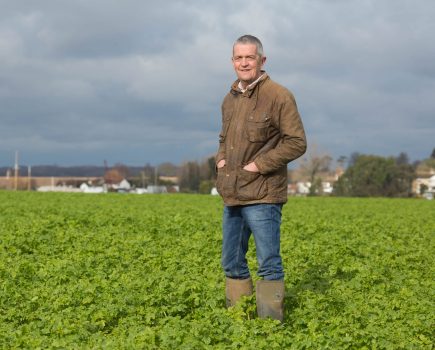 In a year where there is no normal, I suppose I shouldn’t have been surprised to start harvesting wheat on the mind-bendingly early date of 19 July.
In a year where there is no normal, I suppose I shouldn’t have been surprised to start harvesting wheat on the mind-bendingly early date of 19 July.
I’d wandered into the crops the previous evening expecting to rub out some greasy unfit samples that would be days if not weeks away from ripening only find some glassy grains in the palm of my hand that you could break your teeth on. The moisture meter reading of 13% provided the evidence that my incisors were still fit for purpose when it came to biting wheat.
This was Crusoe drilled in good conditions after oilseed rape on heavy land in mid-Sept that had looked good all year until it ran out of steam in June due to prolonged drought causing it to prematurely rush to ripen rather than put weight on in the ear in July. The yield was a little under 8t/ha which, in the words of my late father ‘was more than we were expecting but we weren’t expecting much’.
We sold it off the combine at £185/t. The good news was that given we only spent £350/ha on inputs growing the crop then it will show a positive margin. The bad news is this was as good as harvest 2020 got, after this mediocre start things got appreciably worse. The later drilled Crusoe on light land in a third wheat position yielded so badly I cannot bring myself to write the figure down here suffice to say even when I recalibrated the yield meter kilo-weight setting to the density of lead shot and halved the header cut width, it still didn’t push the t/ha figure into two digits.
The good thing about early harvests is they give you extra time in August to prepare for the next campaign. The big debate for many is how much OSR to grow, if at all. Listening to the grapevine you suspect the average UK OSR yield will fall below the landmark 2.5t/ha, especially if you include the area that was drilled but wasn’t taken to harvest. It’s also likely that this could be the worst average yield since UK farmers started growing the crop in the 1970s.
The usual thought process on this farm is to slam the combine door as the last of the OSR is cut bellowing ‘never again’ but then as the dust has settled and the red mist has cleared we find ourselves giving it another go. With prices where they are it is too much temptation. There is also the delusory hope that for some reason 2020-21 will be a benign CSFB year and the weather patterns will be more helpful than the kick in the balls we got this year. We do have 40ha on this farm that hasn’t seen OSR for over ten years so the hope is the land isn’t going to be under siege from the shiny little cotyledon-munching, egg-laying blighters.
The concern is if the UK OSR crop loses critical mass then there might be a question mark over the UK crushing industry. The dilemma for growers may be that we will need imports to keep the crusher infrastructure we need for our own benefit. The bitter irony being that those imports are grown using neonics which as we know only too well are denied to UK growers. The current calls to ban agricultural imports that would be illegal to grow in the UK might be more complex than we think.
As we know with GM, for years now we’ve had to put up with the unfairness of having to compete with cheap-to-grow imports that we aren’t allowed to grow. If the EU didn’t give us that protection it’s unlikely we will get it under Brexit. The even more bitter irony is that it’s fellow farmers who buy GM protein to feed to livestock while their arable neighbours look on with a keen sense of injustice.
Guy Smith grows 500ha of combinable crops on the north east Essex coast. @EssexPeasant




